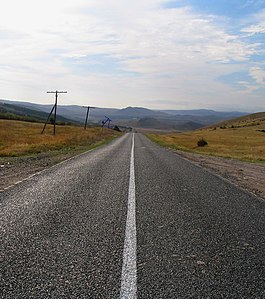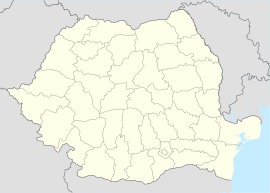
Northern Dobruja is the part of Dobruja within the borders of Romania. It lies between the lower Danube river and the Black Sea, bordered in the south by Southern Dobruja, which is part of Bulgaria.

Dobruja or Dobrudja is a historical region in the Balkans that has been divided since the 19th century between the territories of Bulgaria and Romania. It is situated between the lower Danube River and the Black Sea, and includes the Danube Delta, Romanian coast, and the northernmost part of the Bulgarian coast. The territory of Dobruja is made up of Northern Dobruja, which is part of Romania, and Southern Dobruja, which is part of Bulgaria.

Constanța is a county (județ) of Romania on the border with Bulgaria, in the Dobruja region. Its capital city is also named Constanța.
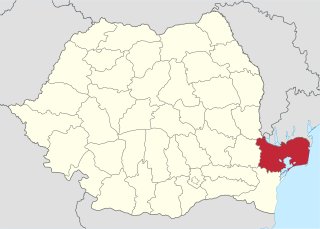
Tulcea County is a county (județ) of Romania, in the historical region Dobruja, with the capital city at Tulcea. It includes in its northeast corner the large and thinly-populated estuary of the Danube.

Southern Dobruja, South Dobruja or Quadrilateral is an area of northeastern Bulgaria comprising Dobrich and Silistra provinces, part of the historical region of Dobruja. It has an area of 7,566 km² and a population of 358,000. It was a part of Romania de jure from 1913 to 1918 and again from 1919 to 1940.
The Megleno-Romanians, also known as Meglenites, Moglenite Vlachs or simply Vlachs, are a small Eastern Romance people, originally inhabiting seven villages in the Moglena region spanning the Pella and Kilkis regional units of Central Macedonia, Greece, and one village, Huma, across the border in North Macedonia. These people live in an area of approximately 300 km2 in size. Unlike the Aromanians, the other Romance speaking population in the same historic region, the Megleno-Romanians are traditionally sedentary agriculturalists, and not traditionally transhumants. Sometimes, the Megleno-Romanians are referred as "Macedo-Romanians" together with the Aromanians.

Tulcea is a city in Northern Dobruja, Romania. It is the administrative center of Tulcea County, and had a population of 73,707 as of 2011. One village, Tudor Vladimirescu, is administered by the city.

Măcin is a town in Tulcea County, in the Northern Dobruja region of Romania.
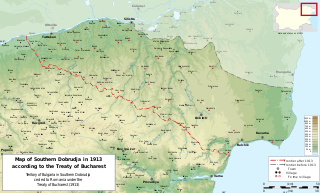
The Treaty of Craiova was signed on 7 September 1940 and ratified on 13 September 1940 by the Kingdom of Bulgaria and the Kingdom of Romania. Under its terms, Romania had to allow Bulgaria to retake Southern Dobruja, which Romania had gained after the 1913 Second Balkan War. Bulgaria had to pay 1 million lei as compensation for the investment provided to the region by Romania.
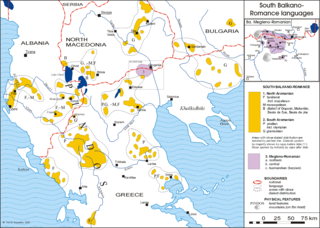
Megleno-Romanian is a Balkan Romance language, similar to Aromanian or a dialect of the Romanian language. It is spoken by the Megleno-Romanians in a few villages in the Moglena region that spans the border between the Greek region of Macedonia and North Macedonia. It is also spoken by emigrants from these villages and their descendants in Romania, in Turkey by a small Muslim group, and in Serbia. It is considered an endangered language.

Ceamurlia de Jos is a commune in the southeast of Tulcea County, Northern Dobruja, Romania. It has a total population of 2,620 and it has an area of 119,43 km². The Golovița Lake is located south of this commune. Its name is derived from Turkish Çamurlu, meaning "muddy".
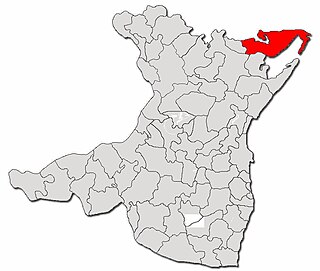
Mihai Viteazu is a commune in Constanța County, Northern Dobruja, Romania. It is situated in the northeastern part of the county, some 60 km (37 mi) from the county seat, Constanța. To the east are the shores of the Black Sea and of Lake Sinoe, while to the north is Tulcea County.

Sarichioi is a commune in Tulcea County, Northern Dobruja, Romania. It is composed of five villages: Enisala, Sabangia, Sarichioi, Zebil, and Visterna. Besides the ethnic Romanian majority, the commune is home to a sizeable Lipovan community (43.1%).

Stejaru is a commune in Tulcea County, Northern Dobruja, Romania. It is composed of three villages: Mina Altân Tepe, Stejaru, and Vasile Alecsandri.
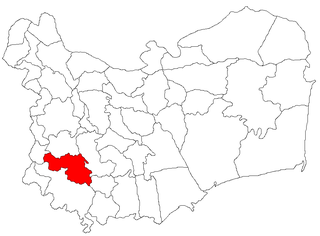
Topolog is a commune in Tulcea County, Northern Dobruja, Romania. It is composed of seven villages: Calfa, Cerbu, Făgărașu Nou, Luminița, Măgurele, Sâmbăta Nouă and Topolog.

Horia is a commune in Tulcea County, Northern Dobruja, Romania. It is composed of three villages: Cloșca, Florești and Horia.

Mihail Kogălniceanu is a commune in Tulcea County, Northern Dobruja, Romania. It is composed of three villages: Lăstuni, Mihail Kogălniceanu and Rândunica.
Nova Cherna is a village on the Danube, in northeastern Bulgaria, part of Tutrakan Municipality, Silistra Province. The current name is derived from the commune of Cerna in Northern Dobruja, whence its Bulgarian villagers were resettled and replaced by Megleno-Romanians according to the population exchange stipulated by the Treaty of Craiova in 1940. A nature reserve named Kalimok Brashlen is located near the village.
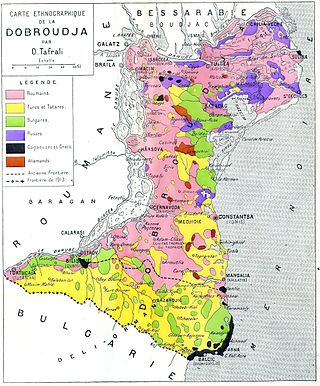
The population exchange between Bulgaria and Romania was a population exchange carried out in 1940 after the transfer of Southern Dobruja to Bulgaria by Romania. It involved 103,711 Romanians, Aromanians and Megleno-Romanians living in Southern Dobruja and 62,278 Bulgarians from Northern Dobruja. After this operation, the application of a population exchange in other cases such as Transylvania was considered.
Dumitru Ciotti was a Megleno-Romanian activist, editor and schoolteacher. Ciotti was born in the Megleno-Romanian village of Skra, then in the Ottoman Empire and now in Greece. His date of birth was in either 1882 or 26 October 1885, sources vary on this. From his youth, Ciotti showed interest in the national cause of the Megleno-Romanians. In 1904, he graduated from the Commercial Lyceum of Thessaloniki, after which he was appointed teacher at the Romanian school in Skra. In 1908, during the Young Turk Revolution of the Ottoman Empire, Ciotti was one of the Megleno-Romanians who was on the side of the Young Turks.
